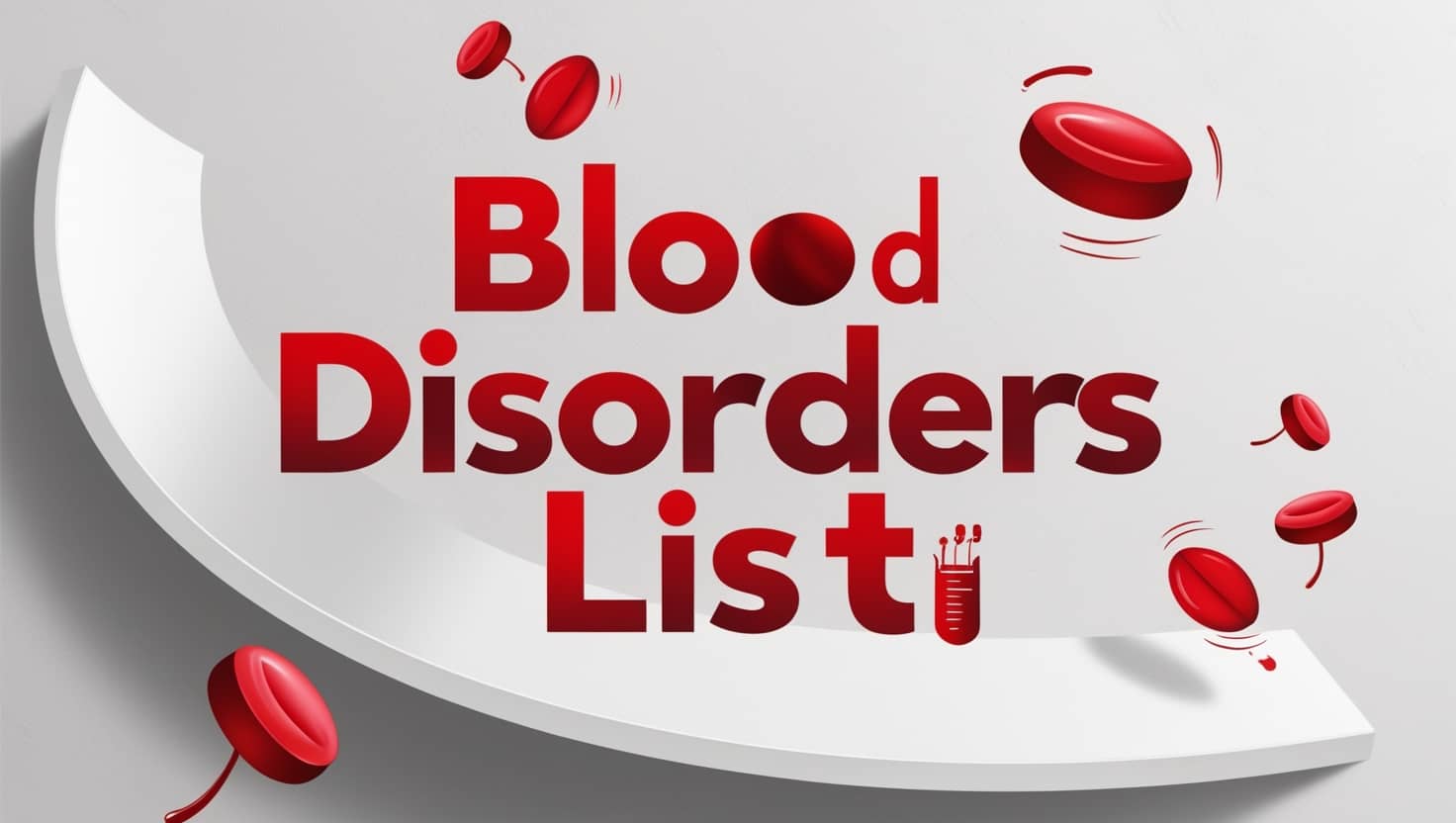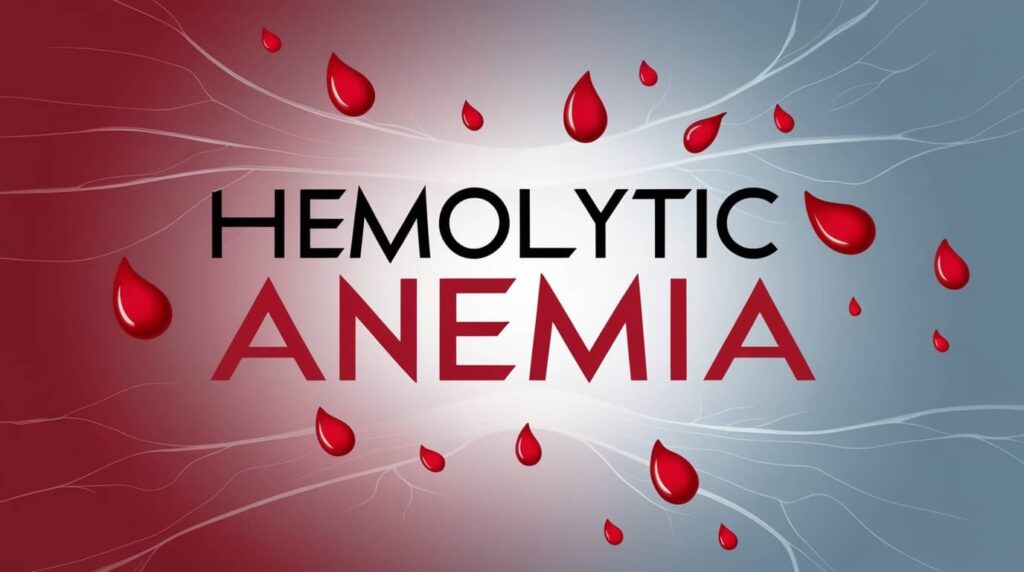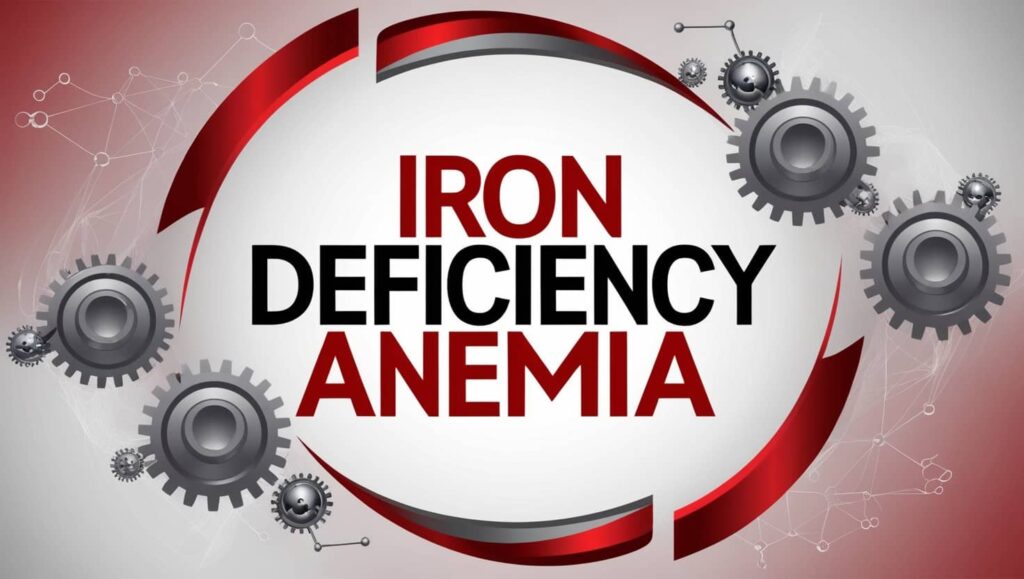Various blood disorders are affecting the human body. This article provides a list of blood disorders with a short brief for some types.
The hematologic system is responsible for several vital body functions including delivery of oxygen and nutrients to tissues, defense against pathogenic organisms, clearance of toxic metabolic byproducts, and maintenance of hemostasis in the setting of trauma.
Blood Disorders List
Here is a list of blood disorders and some of them will be discussed briefly
Anemias such as: –
-
- Anemia of chronic disease.
- Aplastic anemia.
- Iron deficiency anemia.
- Megaloblastic anemia.
- Sickle cell anemia.
- Hemolytic anemia.
- Thalassemia such as alpha and beta-thalassemia.
- Sideroblastic anemia.
- Polycythemia such as polycythemia Vera.
Other disorders such as
- Coagulation defects.
- Fibrinolytic defects.
- Thrombocytosis.
- Thrombocytopenia such as immune thrombocytopenic purpura.
- Non-thrombocytopenic purpura.
- Thrombophilia.
- Qualitative platelet defects.
- Coagulation disorders such as hemophilia A and B.
- Blood cancers such as lymphoma, leukemia, and myeloma.
Brief Description of Some Blood Disorders
Anemia is defined by the World Health Organization as hemoglobin (Hgb) less than 13 g/dL in adult men and less than 12 g/dL in adult non-pregnant women.
About 30% of adult non-pregnant women, 12% of adult men, and 24% of the elderly are anemic.
- Anemia of Chronic Disease
Anemia of chronic disease, also known as anemia of chronic inflammation, is caused primarily by infections, autoimmune disorders, chronic renal insufficiency, and malignancies (both hematologic and solid tumors).
It is the most prevalent cause of anemia in hospitalized patients and the second most common cause after iron deficiency anemia.
- Iron Deficiency Anemia
The most common cause of anemia worldwide is iron deficiency anemia, which results in microcytic and hypochromic red cells on the peripheral smear.
Age, gender, and socioeconomic status all play a role in determining the cause of iron deficiency anemia.
This can be due to an insufficient iron intake, decreased iron absorption, or blood loss, among other causes.
According to research, there is a link between menstruation and iron deficiency anemia. In women of childbearing age in the United States, the rate of iron deficiency anemia is 10% due to menstrual losses.
Iron deficiency anemia and anxiety were linked together and researchers found that iron deficiency was also correlated to other psychiatric disorders.
- Sickle Cell Anemia
Sickle cell disease (SCD) is a multisystem disorder that affects one in every 500 African Americans and is the most common genetic disease in the United States.
Approximately one in every twelve African Americans carries the autosomal recessive mutation, and approximately 300,000 infants are born with sickle cell anemia each year.
Sickle cell disease is caused by a mutation in the hemoglobin beta chain that replaces glutamic acid with valine at position six on chromosome 11.
The most common monogenic disorder is sickle cell anemia.
The disease is prevalent among people in Sub-Saharan Africa, South Asia, the Middle East, and the Mediterranean.
It is estimated that there are approximately 100,000 people in the United States who have sickle cell disease, and this number is expected to grow.
- Immune Thrombocytopenic Purpura
Antiplatelet antibodies and immune platelet destruction characterize immune thrombocytopenic purpura (ITP).
The disorder has been described as preferring young women over men.
Early platelet kinetic studies were consistent with reduced platelet survival as the primary abnormality in ITP, and bone marrow megakaryocytes appear morphologically and quantitatively normal.
It affects both children and adults at a rate of 3.3 per 100,000 per year.
- Lymphoma
Lymphoma is a broad term for a variety of neoplasms that arise from the lymphopoietic system.
It is divided into two groups: Hodgkin disease (HD) and non-Hodgkin lymphoma.
Hodgkin disease (HD) is characterized by large polynuclear Reed-Sternberg cells.
B-cell and T-cell lymphomas are subtypes of NHL.
NHL is the fifth most common cancer in the United States, with an estimated 55,000 new cases in the year 2000.
North America, Australia, and Western Europe all have higher NHL incidence rates than do South America and Asia. However, the increase in incidence is consistent across all countries.
- Aplastic Anemia
Aplastic anemia is a syndrome of chronic primary hematopoietic failure caused by injury leading to diminished or absent hematopoietic precursors in the bone marrow and attendant pancytopenia.
The idiopathic cause is the most common and accounts for 65%. The most common hereditary cause is Fanconi anemia.
Pancytopenia, organ hypoplasia, and bone defects such as abnormal radii, absent thumbs, and short stature appear in the late first decade.
The male-to-female ratio is approximately one-to-one. Aplastic anemia affects people of all ages, but there is a small peak in the incidence in childhood. A second peak is found in the age group of 20 to 25 years old.
- Megaloblastic Anemia
Megaloblastic anemia (MA) is a heterogeneous group of anemias characterized by the presence of large red blood cell precursors in the bone marrow, which are referred to as megaloblasts.
Megaloblastic erythroid precursors are larger than normal and their nuclei are larger and appear immature with granular chromatin.
The most common causes of megaloblastic anemia are vitamin B12 or folate deficiencies within a long list that includes deficiency of other micronutrients, congenital disorders, myelodysplastic syndromes, and acquired DNA synthesis defects seen during chemotherapy.
Related Content: Dangerously Low Ferritin Levels – Causes and Treatments
Conclusion
There is a wide range of variety of blood diseases that may negatively affect your overall health, some of which may be fatal. That is why you need to know about some of the blood disorders that may affect you.
There are many available tests used to determine blood parameters such as
-
- Erythrocyte sedimentation rate.
- Hemoglobin concentration.
- Hematocrit.
- Bleeding and clotting times.
- Mean corpuscular hemoglobin.
- Mean corpuscular hemoglobin concentration.
- Mean cell volume.
- Determination of blood groups.
They are all routinely used in clinical settings, and deviations from normal can indicate a variety of conditions such as anemia, pregnancy, dehydration, overhydration, infectious disease, cancer, thyroid disease, and autoimmune conditions.
If you have suspicious symptoms and you think you have a blood disease, seek immediate medical attention.
References
- World Health Organization. International Classification of Diseases 11th Revision. World health Organization. ICD
- Warner, M. J. (2020, August 10). Iron deficiency anemia. StatPearls [Internet]. PubMed
- Sedrak, A. (2021, February 26). Sickle cell disease. StatPearls [Internet]. PubMed
- T;, G. (2008, February). Epidemiology and pathophysiology of immune thrombocytopenic purpura. European journal of haematology. Supplementum. PubMed
- SH;, B. D. Z. (2000, September). Epidemiology of lymphomas. Current opinion in oncology. PubMed
- Moore, C. A. (2020, November 23). Aplastic anemia. StatPearls [Internet]. PubMed
- MB;, Z. (2008, June). Methods to assess iron and iodine status. The British journal of nutrition. PubMed
Yusuf Saeed
Pharmacist | Medical Writer & Translator
Yusuf Saeed graduated from the Arab Academy for Science and Technology and Maritime Transport with a B.Sc. in Pharmaceutical Sciences. His passion for research and healthcare communication led him to specialize in medical writing and translation. Yusuf is committed to delivering accurate, well-researched content that empowers readers with reliable medical information and bridges language gaps in healthcare education.
As the founder of Medserene, Yusuf Saeed established the platform with a vision to provide trustworthy medical content and accessible healthcare information. His mission is to create a reliable resource that empowers readers to make informed decisions about their health and well-being. Driven by his passion for clear communication and healthcare education, Yusuf aims to bridge the gap between medical knowledge and everyday understanding.







